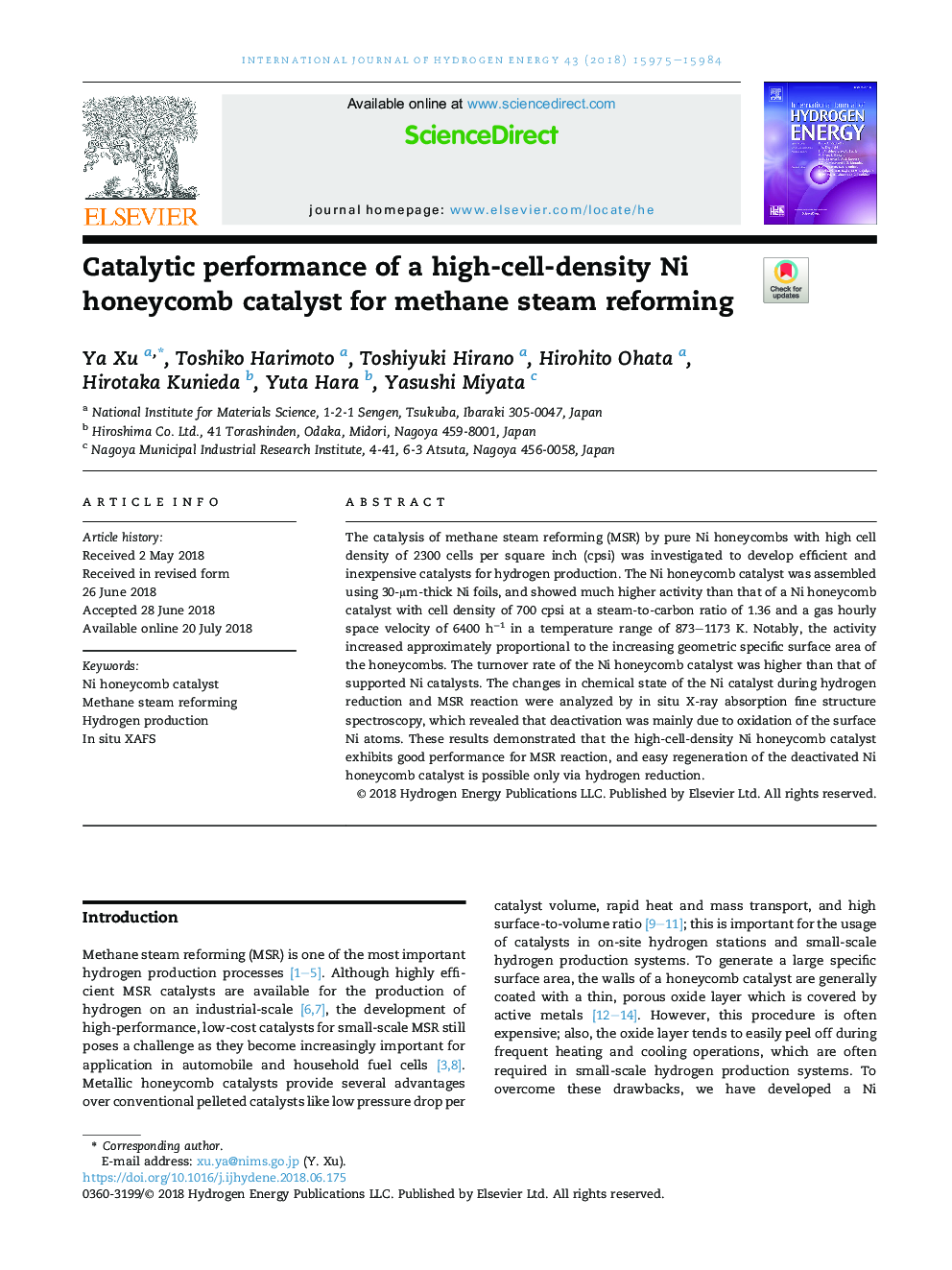| Article ID | Journal | Published Year | Pages | File Type |
|---|---|---|---|---|
| 8961284 | International Journal of Hydrogen Energy | 2018 | 10 Pages |
Abstract
The catalysis of methane steam reforming (MSR) by pure Ni honeycombs with high cell density of 2300 cells per square inch (cpsi) was investigated to develop efficient and inexpensive catalysts for hydrogen production. The Ni honeycomb catalyst was assembled using 30-μm-thick Ni foils, and showed much higher activity than that of a Ni honeycomb catalyst with cell density of 700 cpsi at a steam-to-carbon ratio of 1.36 and a gas hourly space velocity of 6400 hâ1 in a temperature range of 873-1173 K. Notably, the activity increased approximately proportional to the increasing geometric specific surface area of the honeycombs. The turnover rate of the Ni honeycomb catalyst was higher than that of supported Ni catalysts. The changes in chemical state of the Ni catalyst during hydrogen reduction and MSR reaction were analyzed by in situ X-ray absorption fine structure spectroscopy, which revealed that deactivation was mainly due to oxidation of the surface Ni atoms. These results demonstrated that the high-cell-density Ni honeycomb catalyst exhibits good performance for MSR reaction, and easy regeneration of the deactivated Ni honeycomb catalyst is possible only via hydrogen reduction.
Related Topics
Physical Sciences and Engineering
Chemistry
Electrochemistry
Authors
Ya Xu, Toshiko Harimoto, Toshiyuki Hirano, Hirohito Ohata, Hirotaka Kunieda, Yuta Hara, Yasushi Miyata,
